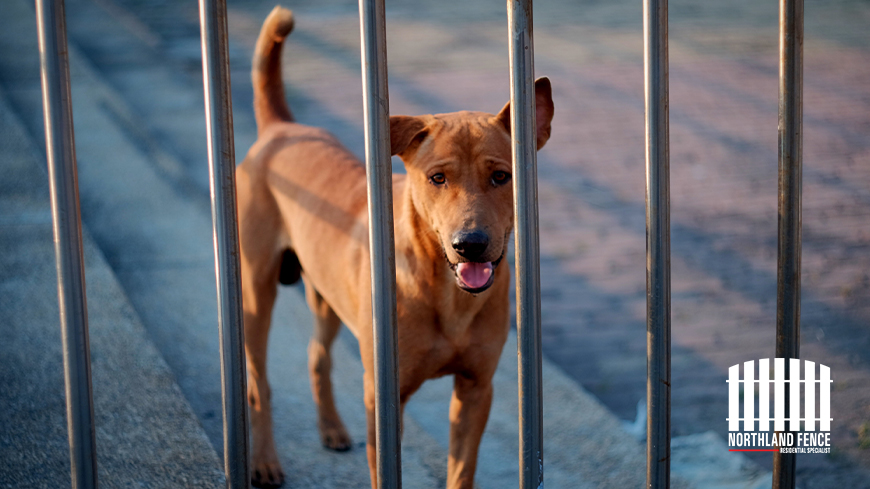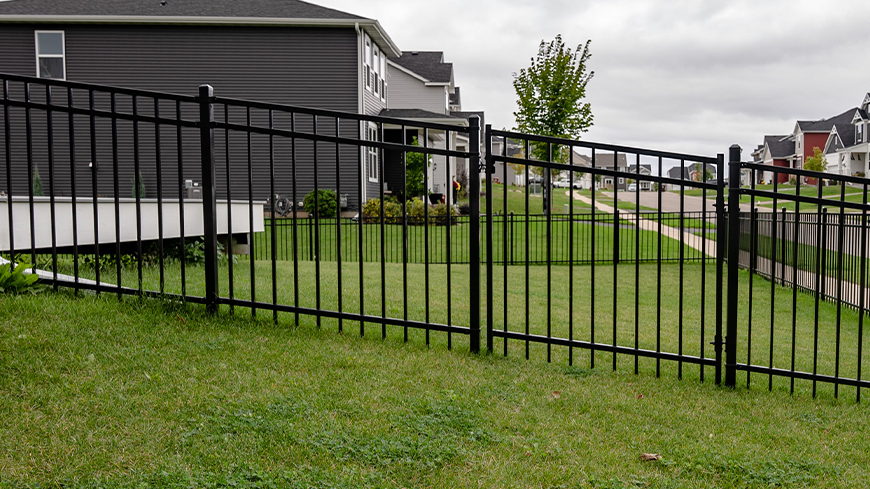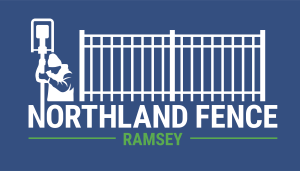
It’s every dog owner’s worst nightmare: you open the back door to let your dog outside while you finish eating lunch, and when you open the door and call them back in, there’s no response. You search your yard, but can’t find your dog anywhere. Usually you watch your dog closely in the yard, but you were almost done with lunch and thought it would be fine. Your dog loves to jump. Did they jump the fence?
At least 14% of dog owners lose their dog at least once in the first five years. While a lot of those instances are inevitably due to the dogs squeezing out when you open the front door or someone leaving the back gate open, that number would probably be lower if everyone had the proper fence for their dog. Some dogs can jump high, and some can even climb fences.
Whether you have a dog you want to keep contained in your yard, or you want to make sure your neighbors can’t look in your back windows, you’ll need a good fence. What if you have a garden you want to show off, but want to keep any animals that might eat your plants out? There are a lot of things to keep in mind when choosing the best fence height. Northland Fence has been in the business for 20 years, so we have lots of tips to share.
You’ll want to think about some things before going into the fencing decision-making process. Keep the following in mind:
All of these factors will be important in deciding the height of your fence.

With each type of fence comes a different height of fence. Let’s look at them now.
Decorative fencing is typically on the shorter side: three to four feet. It’s usually built for aesthetic purposes, not practical ones, so the height isn’t necessary. In some cases, decorative fencing might be built specifically to be seen alongside your house and yard, serving as part of your landscaping.
Privacy fences are definitely not built to show off your house like some decorative fencing may be. Instead, they’re built for, as the name suggests, privacy. The standard privacy fence height is six feet. That should be plenty of height to protect your backyard from prying eyes, and to protect your eyes from any unpleasant views your property has the pleasure of existing alongside.
Pool fencing has additional regulations that other fence types don’t. This is for safety purposes. You’ll have to check your local regulations to be sure, but pool fencing almost always has to be at least four feet tall.
You have a lot of options when it comes to garden fencing. If you’re worried about chipmunks and skinks, you can probably make do with a low fence. If deer are a problem, however, you’ll need a fence that’s eight feet tall, or else they’ll be able to jump over it. If you want something for more aesthetic purposes, a short metal fence might look nice.
Shorter fences usually serve as boundary fences. They can mark the edges of large properties, or mark front yards. Usually, these are three feet. Sometimes short fences multi-task as decorative fences. If you don’t think you’ve ever seen a fence shorter than four feet, you at least know of one: the stereotypical white picket fence.
Now that we’ve covered the first things you need to think about and what your options are, let’s talk more about the practical aspects of setting up your fence and determining its height.
Every state, city, and sometimes neighborhood has its own fencing regulations. You’ll want to follow these regulations. If you don’t, you could get saddled with a hefty fine. We have a page on our website dedicated to city codes and regulations in Minnesota to help you out.
Let’s look at Ramsey’s regulations as an example. In Ramsey, you and your neighbor have to sign an agreement to share ownership of any fence you place directly on your property line. Otherwise, the fence needs to be entirely within your property lines, and can’t block traffic visibility, access to utilities, or public right of way. You’ll need a zoning permit for any fence you construct, though fences seven feet and over require a building permit. Fencing over eight feet tall will require an additional variance.
As far as height restrictions go, the maximum height you can have for your fence without a variance on your permit is eight feet. Fencing in your front yard can be a maximum of four feet tall. Pool fencing in Ramsey needs to be at least four feet tall, and impossible to climb over. This means no gaps more than six inches.
Don’t forget to check with your HOA, too. Lots of times, neighborhoods will have restrictions on what fence materials or colors you can use, and what height your fence can be.
Keeping up with fencing laws can be stressful, which is why we’ll do it for you if you choose to work with us.
There are a lot of different fence styles, from aesthetics to materials, so let’s do a quick overview of the most common options:
If you aren’t sure what style to go with, or where exactly you want your fence, we have an online fence builder that’s worth checking out. It won’t cost you anything, and can help you develop the perfect vision for your yard.
Have you ever seen a six-foot-tall fence in a front yard? You probably never thought about it before, but now that you have, wouldn’t that seem weird? If you remember from our regulations section, front yard and backyard fencing tend to have different rules governing them. Front yard fencing usually has to be shorter so as not to block visibility for anyone driving by. Plus, a tall front yard fence wouldn’t be the best for curb appeal.
Backyard fences, on the other hand, are usually taller. In most cases, these won’t be seen from the road, so visibility isn’t an issue. You’ll likely hang out in your backyard more and want more privacy there, too, so it makes sense.
If you need to build a fence on a retaining wall, things get a little tricky. Make sure to check your city’s regulations for details on what to do. In Minnesota, you can build retaining walls under four feet without a permit, but anything larger than that needs one.
As far as other materials go, some locations limit the materials your fences can be made from. Barbed wire and electric fences are outlawed in Minnesota, so if you’re looking to build one of those, you’re out of luck.

Now you’re an expert in fence heights! Between this blog and our online fence builder, you might have an idea of the height and kind of fence you want now. While you’re welcome to try to tackle a DIY project, that will be hard with any of our recommended materials. Instead, consider giving Northland Fence a call. We’ll handle everything you need.
Northland Fence has been family-owned and family-focused since 2004. We’re the highest-rated fencing company in Minneapolis, and we’d love to show you why. We work year-round, and you can call us anytime at (763) 316-4881 for help installing your dream fence.
Whether you’re looking for a beautiful, maintenance-free vinyl privacy fence, a sturdy chain link fence, or a ornamental fence, we’re ready to show you why we’re Minnesota’s highest and best rated fence company.
Use this form to request a free estimate or call us at 763-325-8211.
6390 McKinley St NW, Suite 150
Ramsey, MN 55303
763-496-4813
Monday: 9 AM–5 PM
Tuesday: 9 AM–5 PM
Wednesday: 9 AM–5 PM
Thursday: 9 AM–5 PM
Friday: 9 AM–5 PM
Saturday: Closed
Sunday: Closed
